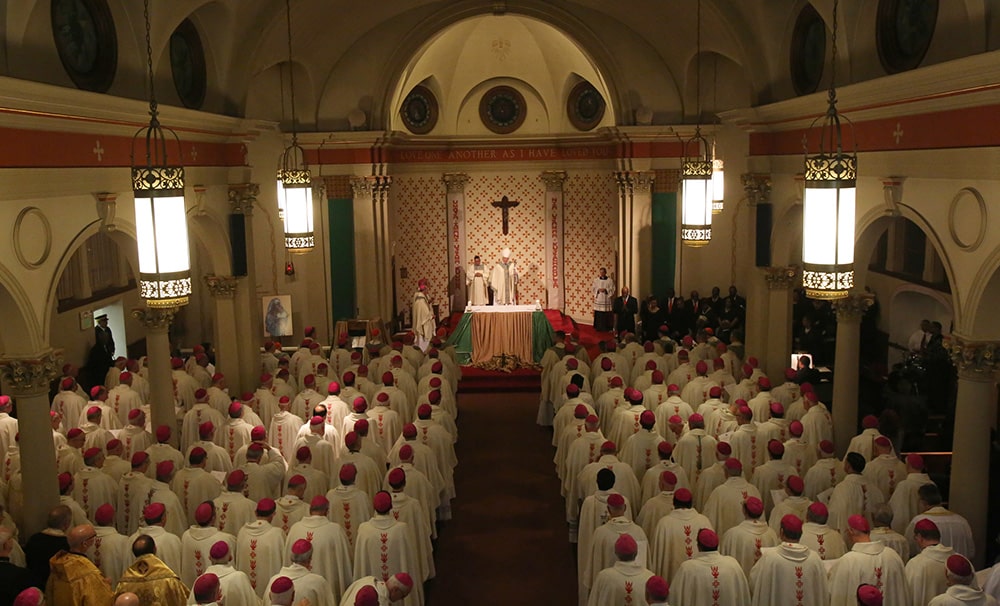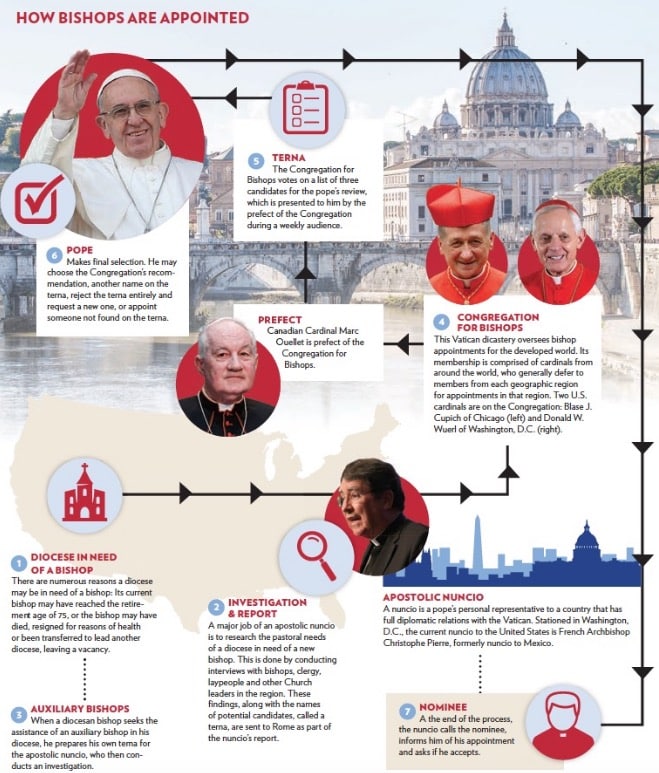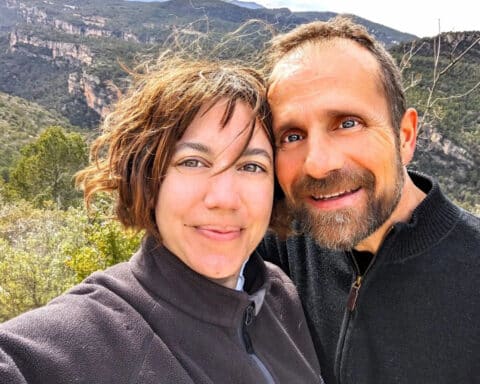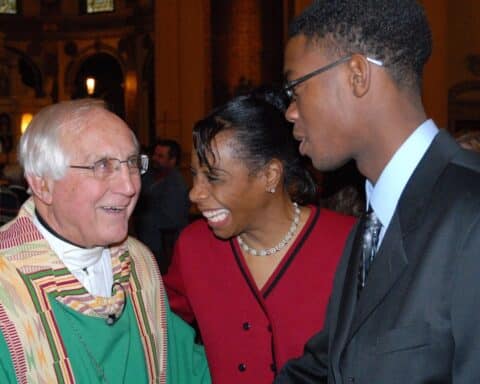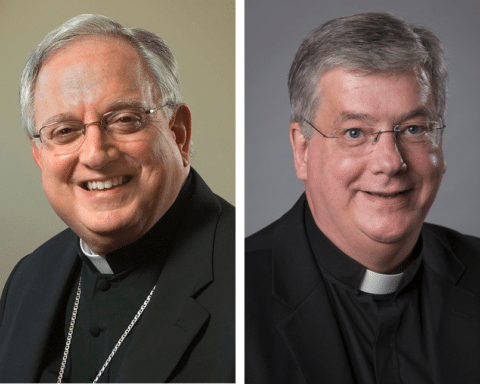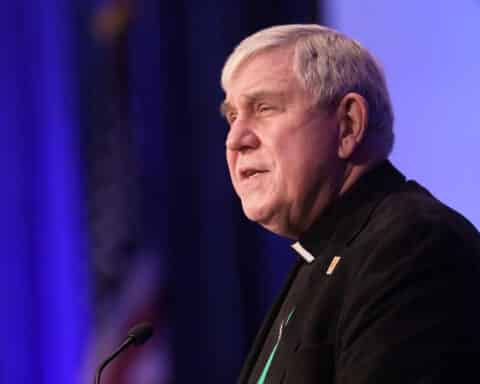As the choice of a bishop potentially can guide and shape the journey of a given diocese or archdiocese for sometimes decades at a time, the nomination and appointment of bishops in the Catholic Church is one that has a significant impact on the lives and ministerial focus of Catholics in almost every segment of the Church.
Despite the importance of this activity and the millions of Catholics affected across the country by these changes, the process of how these new shepherds are appointed to their new sees remains largely unknown, or at least largely opaque, to many.
Let’s take a closer look, therefore, at the complex process that originates with the needs of a local diocese and extends all the way to the desk of the pope.
Selecting bishops in history
Before looking at the process today, it’s important to realize that the process of how a bishop is chosen has changed and developed much over the Church’s 2,000-year history. Bishops are the successors of the apostles. As the number of apostles dwindled — often through their martyrdom — their closest collaborators were chosen and appointed to fulfill their role in the community.
In the patristic era, it was common for the clergy of a diocese to elect their bishop. There is one instance when that still occurs today — namely, when the College of Cardinals (technically considered as senior clergy of the See of Rome) elects a new bishop of Rome — a new pope. In some cases, historical evidence shows that bishops were selected by the people of the diocese. There are many situations in the Middle Ages where the state demanded the right to select bishops, resulting in some cases where episcopal office became more political in nature than pastoral. Some countries today still maintain privileges of consultation on bishops nominated in their territories.
Some particular dioceses throughout the world today — particularly about half of the Latin-rite sees in Germany — have governing councils of clergy called “chapters,” which play a role in choosing the diocesan bishop. Likewise, patriarchal Eastern-rite Churches select their own bishops and then request approval by the Holy See.
Despite these more irregular paths for selecting bishops that still exist today, the practice of selecting bishops in the Latin-rite (Roman Catholic) Church generally follows a process that results in a decision made by the pope himself. But the task would be fraught with difficulties if the pope had to navigate his way through selecting bishops on his own, especially considering that at least one bishop is nominated somewhere in the world every day. Moreover, collegiality is essential to the episcopate, so wide collaboration and consultation is expected. Appointments are generally to fill positions for archbishops, bishops or auxiliary bishops at the diocesan level. Each is handled in similar, yet slightly different, ways.
Selecting diocesan bishops
The current process for selecting bishops typically begins locally. Each diocese is part of a larger grouping — these larger territories are called metropolitan provinces, each with an archbishop.
Any bishop in a province is invited to submit names of priests whom they believe would do well to serve as a bishop. Normally, bishops in a province meet at least yearly, and the province’s archbishop circulates the names he has collected along with a resume of each priest. Together the bishops of the province discuss the nominated priests and take a vote to decide which names should be recommended. This list then is submitted to the country’s apostolic nuncio, the pope’s personal representative in a country and a pivotal player in the process of selecting bishops there. The current apostolic nuncio in the United States is French-born Archbishop Christophe Pierre.
1. Needing a new bishop
A diocesan bishop is selected when a vacancy of that office is created in a given diocese. Bishops are required to submit their request for retirement at age 75, although it is not effective until the pope accepts it. Bishops may also resign before the mandatory age, albeit for a grave reason such as debilitating illness or some other situation that prevents them from fulfilling their ministry. A vacancy can also be created when a bishop is transferred from one diocese to another.
Option for a quick study
As bishops are nearing retirement or suffering from ill health, they may sometimes request or be given a coadjutor bishop. A coadjutor serves alongside the diocesan bishop, also known as the ordinary, and effectively serves as his co-administrator and fills the role of diocesan vicar general. Coadjutors will automatically succeed the diocesan bishop at the time of his 75th birthday, his death, early resignation or his reassignment.
2. The research phase
When deliberating on candidates for diocesan bishops, the nuncio will find out as much as possible about the diocese in question. A report is compiled by the current bishop or diocesan administrator after consultation with various officials within the diocese. During this process, the nuncio could make contact with persons in diocesan offices, certain clergy as well as previous bishops of the diocese in question or other bishops in the province. Once the nuncio shortens his list of candidates, he seeks the input of as many as several dozen people who know the candidates in consideration by asking them to respond to a questionnaire completed in strictest confidentiality. After the nuncio has reviewed all of this information, he composes a report of three candidates — called a “terna” — in which he notes his preferences. All this material is forwarded to the Vatican’s Congregation for Bishops.
Selecting archbishops
In those cases where an archbishop is to be selected, a terna is usually composed for currently serving bishops. The process operates in a slightly different way. Typically, bishops from the suffragan sees — those dioceses under an archdiocese in a given province — are first considered, although sometimes something of a nationwide search applies. Other archbishops in the United States might be consulted, too. This all depends on the position of the diocese or archdiocese within a country and its unique needs. This is true also in more prominent dioceses with a large population, etc.
3. Selecting auxiliary bishops
The procedure for nominating and selecting auxiliary bishops — those bishops ordained to give assistance to the diocesan bishop — largely follows the same process, with a few exceptions. In this case, the diocesan bishop typically inaugurates the process by submitting the request for an auxiliary to the nuncio. Usually a report is compiled with statistics of the diocese, which give a rationale for the need. Auxiliary bishops are usually given to dioceses that have a large population or other needs that warrant one or more auxiliary. Some American archdioceses have several, such as Los Angeles, which has seven active auxiliaries. The diocesan bishop will ordinarily prepare the terna of candidates, which he turns over to the nuncio. They are then investigated by the nuncio and his staff before their names are submitted to the Congregation for Bishops.
4. The Congregation
When the prefect of the Congregation for Bishops — currently Canadian-born Cardinal Marc A. Ouellet, PSS — approves the dossier submitted by the nuncio, the process moves ahead to select a bishop for a given post. The prefect chooses a member of his staff to create a summary of the information submitted by the nuncio, which in turn is submitted to the entire congregation — staffed by bishops and cardinals from around the world. The congregation members discuss bishop appointments twice monthly on average. Two Americans currently serving on the Congregation for Bishops are Cardinal Donald W. Wuerl of Washington, D.C., and Cardinal Blase J. Cupich of Chicago.
5. The terna
Members of the congregation discuss the candidates and take a vote. They can either support the nuncio’s recommendation, choose another priest to move to the top of the terna, or ask that another terna be composed.
6. The pope picks
The process finally draws to a close when the prefect of the Congregation for Bishops meets privately with the pope. During the meeting, he presents the terna, given in a particular order with the congregation’s choice at the top. At this final stage, the pope can do one of four things: He may agree with the congregation’s proposal, he may choose another candidate on the list, he may ask for a new terna to be submitted, or, more unlikely, he could choose his own candidate.
7. The nominee
Within a few days, the pope’s decision is rendered to the Congregation. Once the nuncio is informed, the nominee is contacted by the nuncio and given the option to accept the appointment. Nominees may refuse episcopal office, but it is rare and must be for good reason.
When an affirmative answer is given, the nuncio arranges with the Holy See to set a date to make an announcement of the appointment. There is usually a two- to four-week period before the public announcement. During this time, the bishop-elect is not allowed to discuss his appointment.
The entire process of nominating and appointing a bishop usually takes six months to a year from the date a diocese becomes vacated due to sudden resignation, death or transfer of the diocesan bishop, or when an auxiliary is requested. In the case of a bishop reaching retirement age, the selection process often will happen before the retirement of the outgoing bishop is accepted. Bishops-elect are to be ordained within three months of their nomination, according to Church law.
Michael R. Heinlein is editor of Simply Catholic. Email him at mheinlein@osv.com. Follow him on Twitter @HeinleinMichael.
Getting ‘the call’
At the end of the process of selecting a bishop is a priest whose life is about to change. The following accounts from two bishops show the very human reality of suddenly finding oneself on the receiving end of an appointment by the pope.
The moment when you know
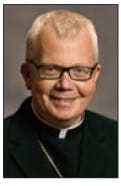
When Bishop Donald J. Hying of Gary, Indiana, received a call from the apostolic nuncio informing him that Pope Benedict XVI had appointed him auxiliary bishop of Milwaukee on May 10, 2011, he was rector of Milwaukee’s St. Francis de Sales Seminary. Finishing his fourth year as rector, his secretary informed him that the apostolic nuncio was on the phone and wanted to speak with him.
“The nuncio doesn’t call you just to ask how you are, especially when you are a priest. So you figure you are either really in trouble or you’re about to become a bishop.” The nuncio “got down to business” and informed him of the pope’s decision “after about 15 seconds of salutation.”
Bishop Hying doesn’t remember being given any time to say if he accepted the appointment, so he immediately responded, “Being obedient to the Church and doing what I’ve been asked to do has never led me wrong. So I am happy to do as the Holy Father wishes.” The nuncio then invited Bishop Hying to put his response in writing and send that to the pope by way of the nuncio. After he got off the phone with the nuncio, he sat stunned and prayed. The formal announcement came on May 26, 2011, and the 16 days in between were an occasion for “a lot of prayer and thought about how this would change my life.”
There was a local press conference on the day of his appointment. And while most bishops only have one memory of such an event, Bishop Hying received news of his next appointment, as bishop of Gary, in a rather unique way. While in Baltimore for the plenary meeting of the U.S. Conference of Catholic Bishops, he learned he would become the fourth bishop of Gary via a brief in-person conversation with the nuncio. The process then unfolded in much of the same way as it had nearly four years earlier.
Being bishop of ‘home’
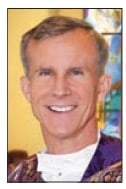
Few bishops have the privilege of serving as bishop of their home diocese, but one who did is Bishop Joseph E. Strickland. He was appointed bishop of his home diocese of Tyler, Texas, in 2012, while he was serving there as the delegate for Bishop Alvaro Corrada del Rio, who was serving as the apostolic administrator of the diocese following his transfer from Tyler to a diocese in Puerto Rico.
Bishop Strickland was in his office on a Friday morning when the nuncio called him. He answered the phone simply, “Father Joe.” The nuncio followed up by asking again if “Msgr. Strickland” was on the line.
“It was really an interesting, brief conversation,” Bishop Strickland said. “He was very businesslike.” When the nuncio informed him of the date it would be made public, Bishop Strickland told the nuncio he’d be teaching a class on that day. When the nuncio didn’t really respond, Bishop Strickland “quickly picked up that class was cancelled!”
Immediately after the phone call, Bishop Strickland went to a diocesan liturgy commission meeting, and his “mind was racing.” Regarding himself as “pretty good at keeping secrets,” he found the two-week interim between appointment and the public announcement to be hard.
Things for New Bishops to Consider
Many things need decided by the new bishop or bishop-elect, who must tend to a series of tasks and decisions needing made. Here’s a short list and some context:
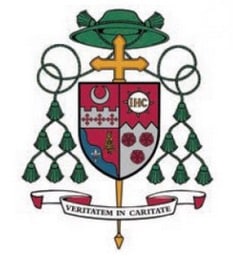
Press conference: A diocese typically holds a press conference the day a new bishop is appointed. This is to answer the media’s questions and introduce the new appointee. Bishops-elect may wear the pectoral cross once nominated and wear the bishop’s cassock with scarlet piping and the amaranth zucchetto, or skull cap.
Coat of arms: Designed by each bishop to incorporate symbols, colors and shapes that represent significant events, persons or places in the life of the bishop. Steeped in tradition, ecclesiastical heraldry is a regulated system of self-identification, adopted by the Church from medieval society.
Motto: Typically chosen from Scripture, although not necessarily, each bishop chooses a quotation or phrase that describes himself or his ministry or serves as something of an inspirational guidepost for the same. A bishop’s motto is generally incorporated into his coat of arms.
Symbols of office: Each bishop typically designs his ring and crosier for his use, although sometimes he receives those from a former bishop who might have been his friend and mentor. He will also choose the vestments he will wear at his ordination, including a miter (bishop’s hat) for the occasion.
Date and place of ordination: New bishops are typically ordained in the cathedral church of the diocese where they will serve as bishop, although sometimes there is the need to choose a larger venue to accommodate larger numbers wishing to participate. A feast day or other convenient date is chosen within that time period.
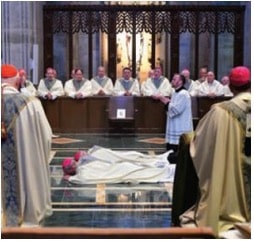
Attending clergy: Usually each bishop-designate chooses two priests to accompany and assist him during the ordination liturgy. These are typically close friends of the new bishop, and they do not fill a major role. They are something like a best man at a wedding.
Ordaining prelates: According to tradition, three bishops are present at the ordination of a bishop, although only one is required for validity. Usually the archbishop of the province will serve as the principal consecrator, while the new bishop chooses two co-consecrators. These are usually the new bishop’s immediate predecessor and the bishop of his home diocese or other bishop friends.
“Bishops’ school”: Typically held each fall and organized by the Vatican’s Congregation for Bishops, newly ordained bishops are brought together in Rome from around the world to be introduced to officials in the offices of the Roman Curia with whom they will communicate most. It also aids in fostering a sense of universal collegiality among bishops.

